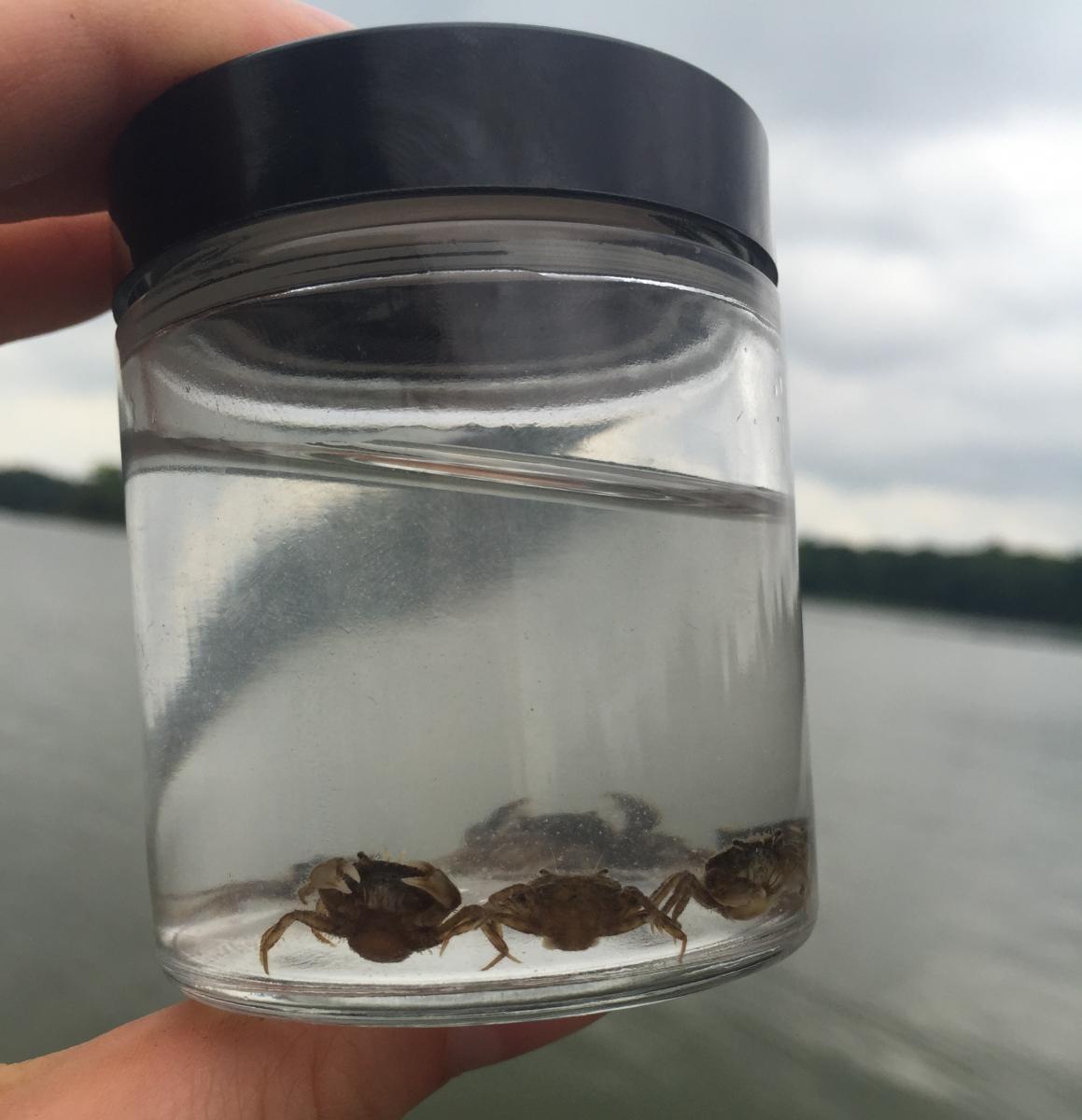Methods
Scientists have picked sites based on historic data and the generosity of private landowners who have allowed us long-term access to their docks and marinas. Each June and August we process over 60 traps from a variety of locations.
We sample in June and August, during the breeding season. We started sampling twice to look at recruitment and reproduction of the crabs.
At each site, scientists collect environmental data (things like temperature and salinity). The crabs are collected in crates filled with oyster shells. These are not traps—the crabs (and eels and fish) can go in and out as they please. The crabs take up residence in the cracks and crevices of the shells. When we pull up the crates, we dump the contents in sieves, and hand-collect every single crab from every shell for further study. Some of the crabs are really small--no bigger than a tick!
After we have found all of the crabs in their “crab condos,” we put the now uninhabited shells back into the crates and into the water. We do two rounds of collection in the summertime (June and August).

We want to make accurate inferences about the crab and parasite populations at the sites, so we need to make sure that we collect all the crabs in the crab condos. Participants split into teams, and after they have gone through the traps once, they switch sieves, and do one more round called a verification round. This is when different sets of eyes go through all of the shells in the crate one more time to look for any crabs that the first team missed. The crabs that were overlooked are placed in a separate bottle, so we can record the number and size of the missed crabs back in the lab.

